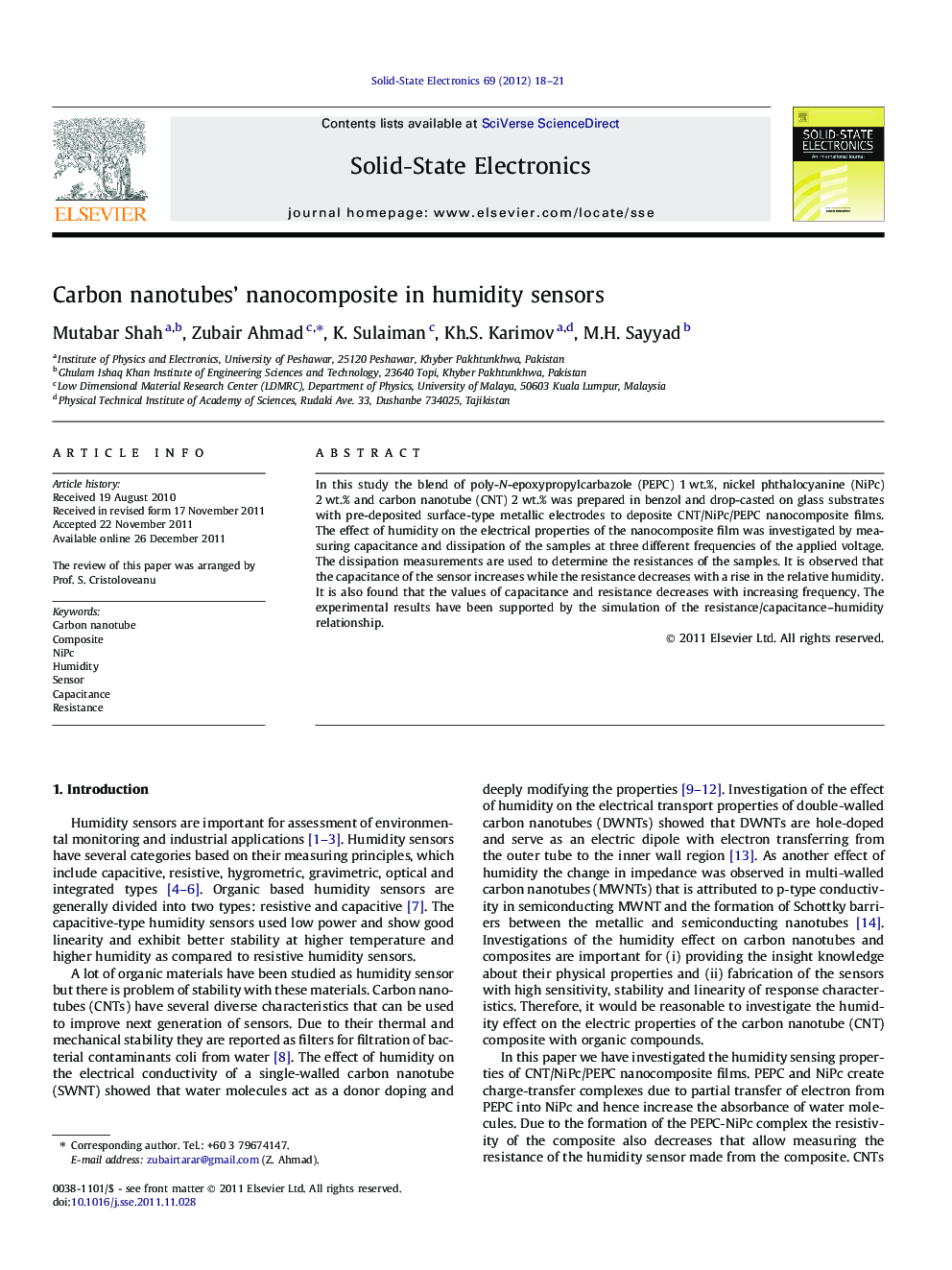| Article ID | Journal | Published Year | Pages | File Type |
|---|---|---|---|---|
| 748760 | Solid-State Electronics | 2012 | 4 Pages |
In this study the blend of poly-N-epoxypropylcarbazole (PEPC) 1 wt.%, nickel phthalocyanine (NiPc) 2 wt.% and carbon nanotube (CNT) 2 wt.% was prepared in benzol and drop-casted on glass substrates with pre-deposited surface-type metallic electrodes to deposite CNT/NiPc/PEPC nanocomposite films. The effect of humidity on the electrical properties of the nanocomposite film was investigated by measuring capacitance and dissipation of the samples at three different frequencies of the applied voltage. The dissipation measurements are used to determine the resistances of the samples. It is observed that the capacitance of the sensor increases while the resistance decreases with a rise in the relative humidity. It is also found that the values of capacitance and resistance decreases with increasing frequency. The experimental results have been supported by the simulation of the resistance/capacitance–humidity relationship.
